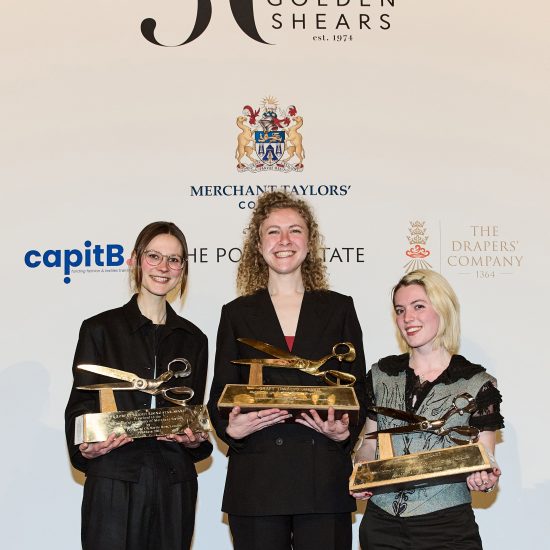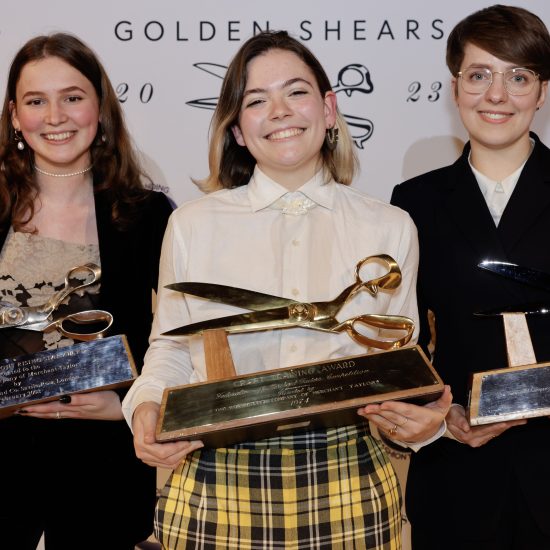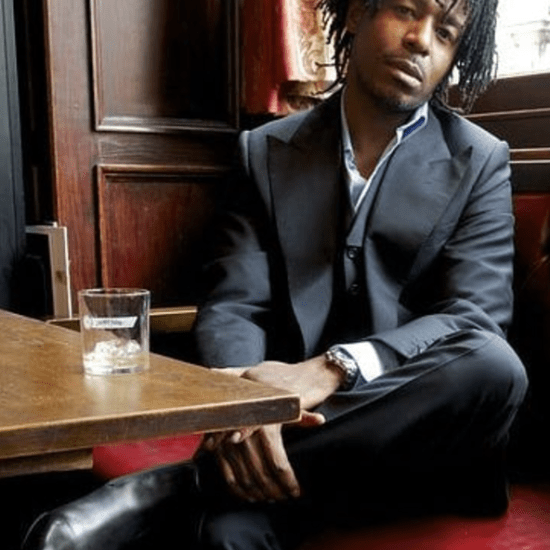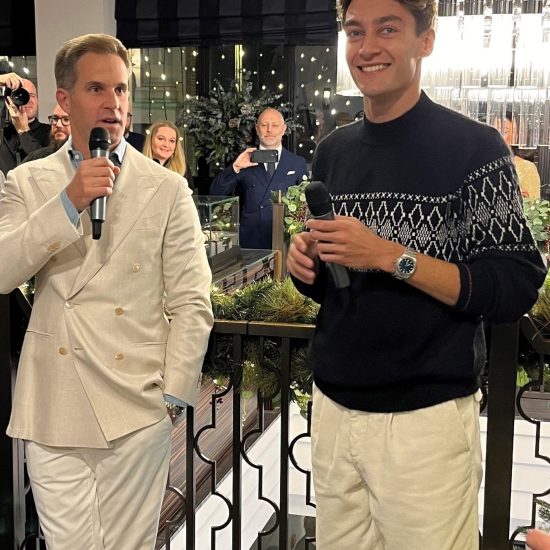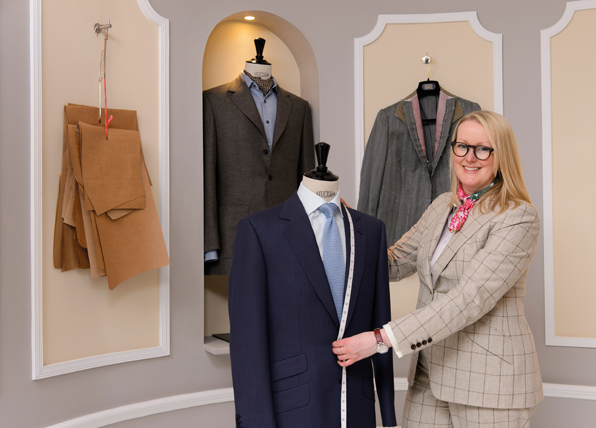
By Diana Butler
Kathryn Sargent made Savile Row history by becoming the first lady tailor to take up residency in the Row. And although Kathryn is truly deserving of her place in the Row, and in history, she still appears to be slightly nonplussed by this turn of events. So how did this girl from Leeds, who admits to not knowing anything about Savile Row when she first came to study in London in the 1990s, end up with the keys to number 37?
“I had travelled south to Epsom to study fashion and in my final year I did a work experience placement at a tailors in Denman and Goddard Street. I was really interested in pattern cutting and had come across some old pattern books,” many of which now fill the shelves of her Brook Street atelier. “I was interested in wearing tailored suits myself, things I used to get in charity shops and my tutor said that the best thing to do is to take a garment apart and look at how it’s made and then put it back together again. I started doing things like that and he then casually suggested: ‘why don’t you go and have a look at Savile Row?’.”
That simple suggestion was to transform Kathryn’s life. “I was brave enough to go into a few tailors, which included a meeting with Peter Day and David Cook at Denman & Goddard. They offered me some work experience and to be honest, I was practically more in Savile Row in my final year than I was at college!
“My initial placement was just two weeks, but I kept going back in my summer holidays right up until I graduated. I decided straightaway that I loved Savile Row it seemed to me to be traditional and had values. Things were done in a certain way, to a certain quality that I hadn’t seen before. I think that was really impressive and the way that the tailors themselves were dressed and the way they conducted themselves was really appealing too.”
Although Kathryn felt at home at Denman & Goddard it was clear that she needed to experience life with a larger firm. “So when I graduated I was offered a job at Gieves & Hawkes as a trimmer – the person who goes in between the cutters and the tailors. They hold all the trimmings stock – the linings, canvases, all the innards that go into a suit – and when a cutter cuts a suit, it would then come to the trimmer who adds all the bits and bobs and then distributes it to the different tailors. It’s a bit like being a runner in advertising or a film studio.
“I had to do a three-month probation on the shop floor as well as one day a week downstairs to make sure I fitted in. I was 21 and just champing at the bit to try and get in full time and I used to work with the Gieves & Hawkes tailors on the weekends and on my down time and they taught me how to make waistcoats.”
Not only was this great training for Kathryn in the world of bespoke tailoring, but was also an excellent introduction to being the only woman in a man’s world. Kathryn worked her way up at Gieves to become a striker, someone who assists the cutters, striking [chalk] out around the pattern, leaving the inlays and cut the cloth, before sending it to the trimmer.
“For me though it was all about customer service. Robert Gieve, fifth generation of the family, was still alive when I was first there so I got a lot of coaching from him on how to be with clients because I didn’t know how to listen to people. As a tailor you need to put yourself second and make sure you listen to the needs of your customers and advise them correctly, but also be aware that the client is an extension of the company. I was just fascinated by that.”
Kathryn clearly listened closely to Robert Gieve’s advice as in 2009 she was named Head Cutter for Gieves & Hawkes. An impressive achievement for any cutter, but a spectacular feat for Kathryn, making her the first female head cutter in the history of the Row. So with such a public endorsement of her skills and talent, why walk away after some 15 years to go it alone?
“I just saw an opportunity,” she says simply. “Gieves is a very masculine shop and I had started making stuff for woman and I could see there would be an opportunity to make more for women in the future. All of my clients [at Gieves & Hawkes] were so different and I just wanted to provide more of a service where I’m asking my clients ‘what can we create for you?’ rather than ‘this is my style, this is what you buy in to and I make it for you’.”
Of course, making the leap to go it alone was not an easy decision to make. “My first day at Kathryn Sargent was horrific. It was a big risk really but I did think if it goes wrong I can always get a job because I had a reputation. It was like coming out of college again! When I was head cutter I was used to working with people and managing people and dealing with clients. I kind of knew the job in terms of cutting and fitting, but not in terms of running the business.
“For me Kathryn Sargent is about providing a great service for our clients. I keep in touch with them, but I don’t bombard them with ideas. I let them come to me when they’re ready. It’s word of mouth and I think people who are interested in menswear and women’s tailoring will find you online.”
So what marks out a Kathryn Sargent bespoke piece? “I have a colour that I use as an under colour for some clients, a rich burgundy colour, my brand colour, but I do that as more of a playful thing,” explains Kathryn. “I do say to my clients that this is what I do and no one knows it’s there and if you’re very conservative we will just do matching one, but hopefully it will reflect the client’s personality and their individual uniqueness.”
Does being the only woman in this very masculine world have any advantages? “When I was an apprentice I began to make my own garments because I needed something to wear to see clients, so I started making my owns suits and things. Now I have male clients asking if I will make something for their wife, a friend or a colleague from work. I never set out to do womenswear, but I really enjoy doing it and there’s been an increase from women in bespoke clothing over the past few years.”
Of course, women have been part of the tailoring industry for centuries, as finishers and assistant tailors, but Kathryn is beating a completely new path is this most traditional of professions. In her modest and understated way, she is the leader of a quiet revolution, which is sending ripples out far beyond London W1.



